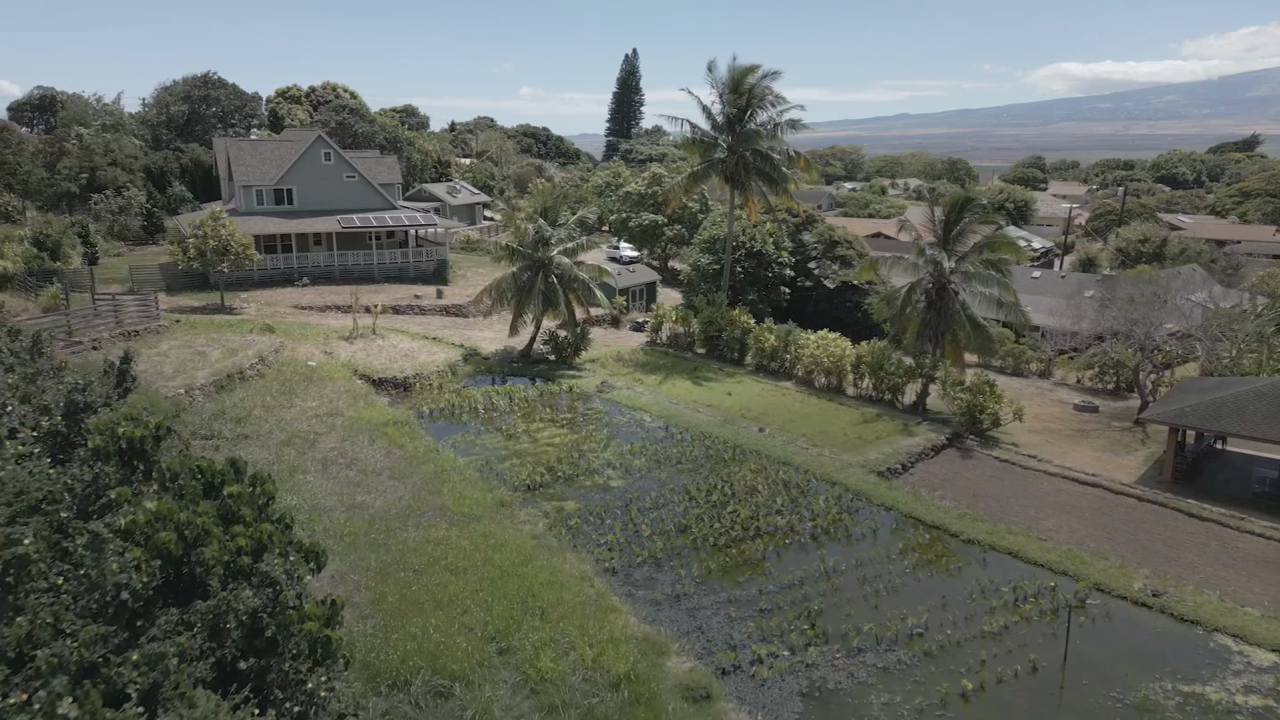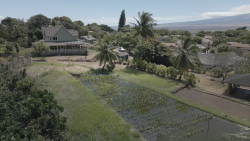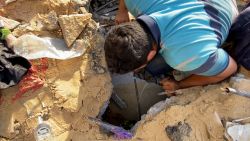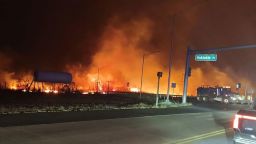President Joe Biden arrived in fire-ravaged Maui on Monday to witness the devastation left by an inferno more than a week ago and assess for himself a government response that some residents initially found lacking.
The trip brought Biden to the scene of the deadliest American wildfire in more than 100 years. His initial response to the Maui wildfires drew criticism earlier this month, mainly from Republicans, who seized upon a nearly five-day period of silence between Biden’s first comments about the fires and when he next publicly addressed the tragedy.
During the visit, the president sought to reassure residents that the federal government will support their recovery, pointing to the historic Lahaina banyan tree that stood nearby, its branches scorched.
“Today it’s burnt, but it’s still standing,” Biden said. “Trees survive for a reason. I believe it’s a powerful, very powerful symbol, what we can and will do to get through this crisis. For as long as it takes, we’re going to be with you, the whole country (will) be with you.”
With about 850 people still unaccounted for, according to Maui County Mayor Richard Bissen, the death toll of at least 115 is expected to rise, as emergency responders and cadaver dogs search through the incinerated wasteland for victims. Biden named a senior federal emergency official to oversee long-term recovery efforts during his visit.
Upon arrival, Biden boarded Marine One for an aerial tour of the debris left behind by the fires and toured the historic town of Lahaina to view the damage firsthand.
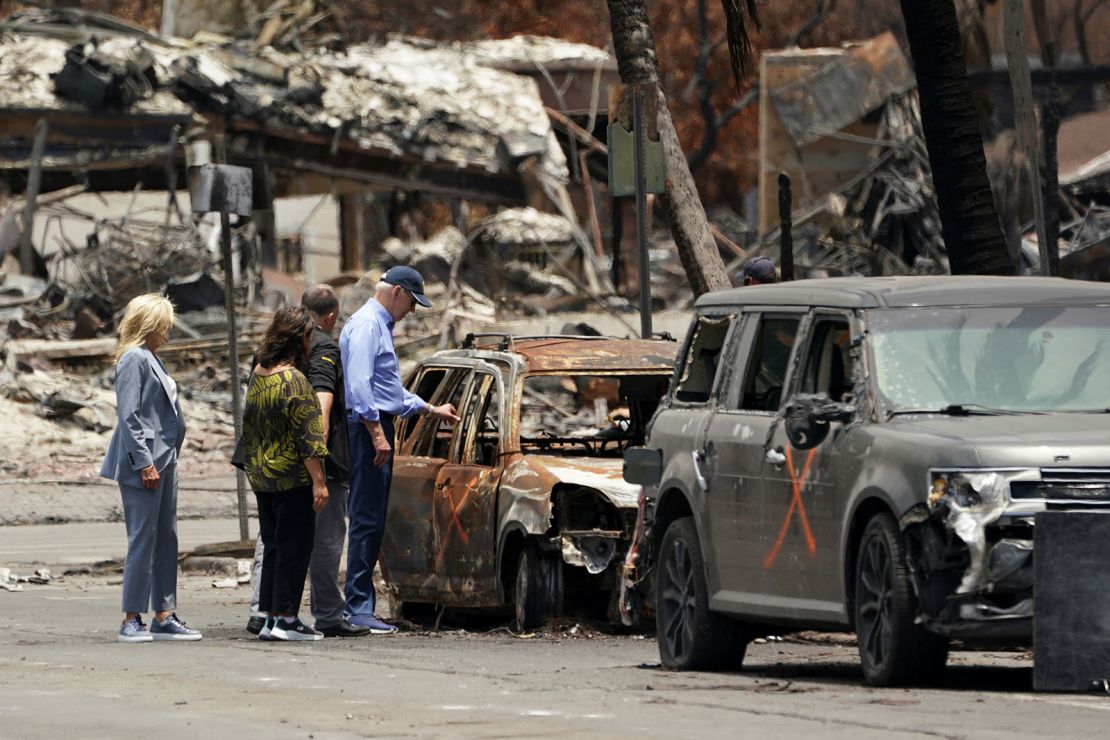
Wearing a baseball cap and aviator sunglasses, Biden walked on Lahaina’s main Front Street past charred trees and ruined facades. He first heard from FEMA officials and a member of the National Guard, then began his walk toward a podium to deliver his remarks – at one point peering into burned-out vehicles that lined the street.
Biden said he wanted to be sympathetic to the community’s needs and requests – something locals have voiced concern about since the fires left the town leveled. The federal government, he pledged Monday, would help local officials “rebuild the way the people of Maui want to rebuild.”
The president called the devastation he’d seen ahead of the speech “overwhelming,” before mentioning the known victims and the hundreds of people still unaccounted for.
“I know the feeling of so many in this town and this community,” he said, recounting a call from a “young first responder” and learning of the deaths of his wife and daughter in 1972.
“The difference between knowing somebody’s gone and worrying whether they’re available to come back are two different things,” he reflected. “It’s one thing to know, it’s one thing to wait and wonder.”
The trip provided Biden with an opportunity to demonstrate in-person compassion for a community shaken by the disaster, and to dispel some of the early backlash at how he initially reacted, when photos of him on the beach in Delaware made for a striking split-screen as the scope of the tragedy came into focus.
A curt “no comment” when he was asked about the death toll last Sunday fueled Republican criticism that he was shrugging off the tragedy. The White House later said Biden couldn’t hear the question. In all, the president went almost five days without addressing the fires publicly following his first comments about it during a speech in Salt Lake City.
‘As long as it takes’
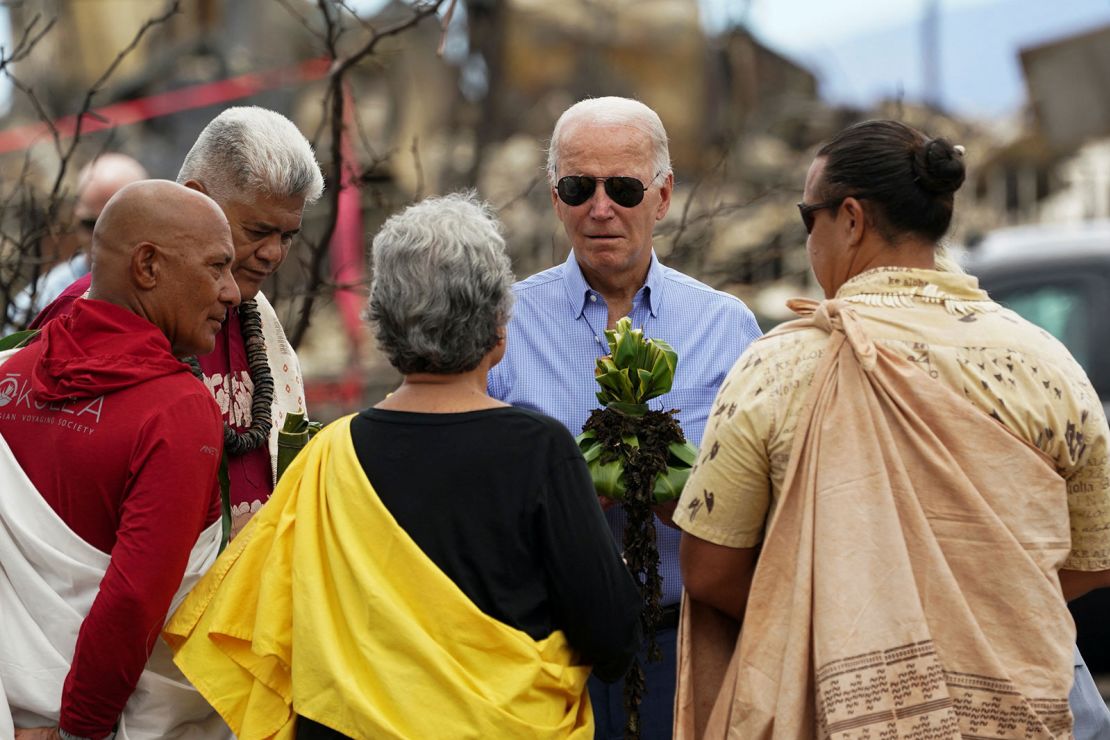
Behind the scenes, however, Biden was actively engaged in responding to the crisis and planning was already underway for a presidential visit. In telephone conversations with Hawaii Gov. Josh Green, Biden sought to ensure the large footprint required for a presidential visit would not obstruct ongoing response and recovery efforts. He received assurances from Green that a trip on Monday would not interfere.
“I know how profoundly loss can impact a family and a community and I know nothing can replace the loss of life,” Biden said in a statement Sunday. “I will do everything in my power to help Maui recover and rebuild from this tragedy,” he continued, adding, “We are focused on respecting sacred lands, cultures, and traditions.”
Since shortly after the brushfire began tearing through the town of Lahaina, Biden has sought to marshal the resources of the federal government to ensure the community is able to recover, including signing an emergency declaration and remaining in regular phone contact with state officials.
“If President Biden could just teleport himself over, he would’ve come here in five seconds,” Green said at a news conference last week. “I’ve never seen such dedication in a president, who within six hours dedicated his time to determine that this was an emergency, and to commit full repair, full reconstruction for our people here in Hawaii.”
The president on Monday ticked through ways the federal government provided support for Hawaii, including by signing a disaster declaration, sending FEMA supplies and naming Bob Fenton – an experienced disaster response official – to serve as the chief federal response coordinator. Fenton has been on the ground in Hawaii since the day the fires began earlier this month.
Prior to Biden’s trip, a White House official said that “as the recovery moves into a next phase, the president has directed Mr. Fenton, who has been a leader in the response from the earliest hours, to make sure every member of this devastated community has access to everything the federal government can offer to heal and rebuild as fast as possible.”
Biden, who spoke with state officials, emergency responders and survivors during the visit, was joined Monday by first lady Dr. Jill Biden. The pair interrupted a weeklong vacation at Lake Tahoe to fly to Maui.
Response speed questioned
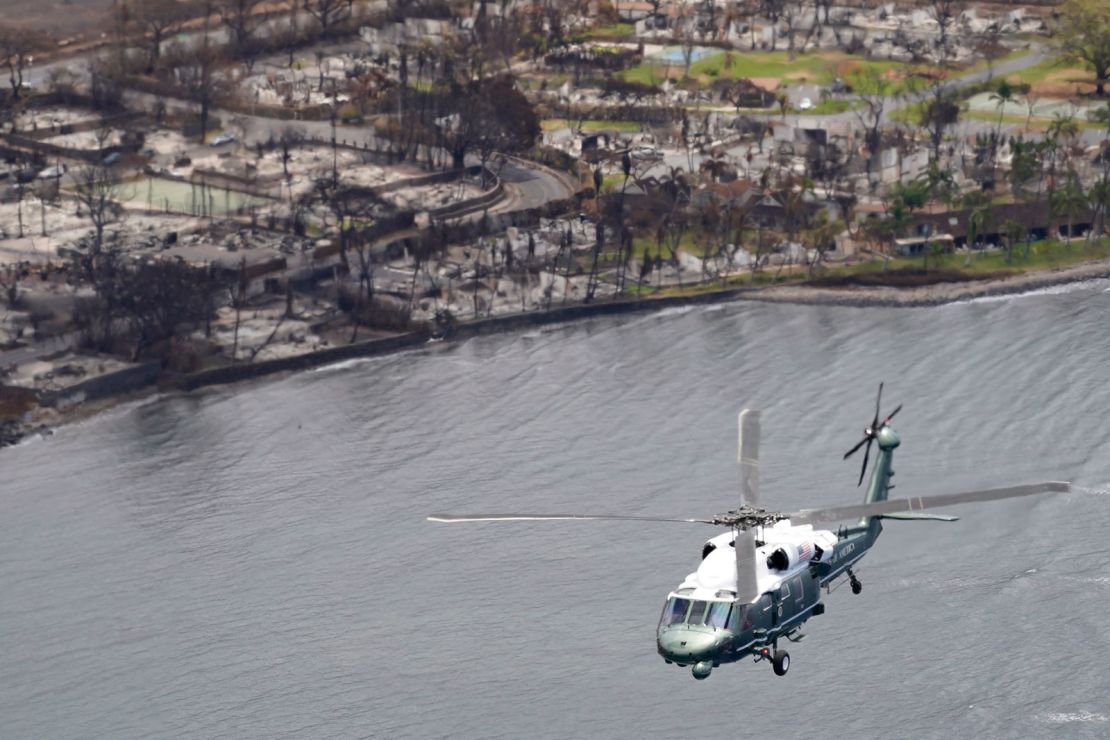
Some on the island have questioned the speed of the government’s response.
In the days immediately following the fire, some residents relied on local networks of boats and cars to shuttle in help to the area. Since then, more robust assistance has arrived on the island.
As of Saturday, there were more than 1,000 federal personnel on the ground helping with ongoing recovery efforts and over $7 million in financial assistance had been provided to people affected. At that time, search and rescue teams had gone through 60% of the impacted area, according to FEMA Administrator Deanne Criswell, who traveled with the president on Monday, ahead of the visit.
She noted on Sunday that the number of people in shelters has fallen “significantly” as they are moved into hotels, and that the next phase in the response will be debris removal efforts and a transition toward long-term recovery.
Maui County Council Chair Alice Lee said on Monday that “the thousands of people who were in our emergency shelters are no longer there. I think there’s nine people left as of today. Thousands have been moved to transitional quarters like the hotels, who are taking very good care of the people, as well as individual homes and short-term rentals.”
“So, I’m sure, as you’re talking to various people, you will hear stories of disappointment, of course, because they have lost a lot. You can’t blame them for being disappointed. But there are many success stories as well,” she said.
Bissen said Monday in a statement that Maui had over 2,000 federal responders “from more than two dozen agencies. Over 20 state and county agencies have deployed nearly 1,000 personnel.”
As residents and businesses embark on the rebuilding process, the US Small Business Administration is evaluating how its disaster relief programs can be tailored to the Hawaii recovery effort, SBA Administrator Isabella Guzman told CNN Sunday.
“We are on the ground and tracking needs to see how the whole of SBA can support communities impacted and disaster survivors,” Guzman said.
Criswell also said she had heard from people on the ground that they want to ensure the federal government supports their vision for the future.
“They just want to make sure that they’re going to be able to rebuild the way they want to rebuild and that as the federal government comes in, that we’re supporting them with their vision of what Lahaina is going to look like in the future,” Criswell said.
Biden underscored Monday that the recovery effort would respect local traditions.
“The fire cannot reach its roots,” he said. “That’s Maui. That’s America. And to the people of Hawaii, we’re with you for as long as it takes, I promise you.”
This headline and story have been updated with additional developments.
CNN’s Holly Yan, Priscilla Alvarez, Sam Fossum and Kayle Tausche contributed to this report.


